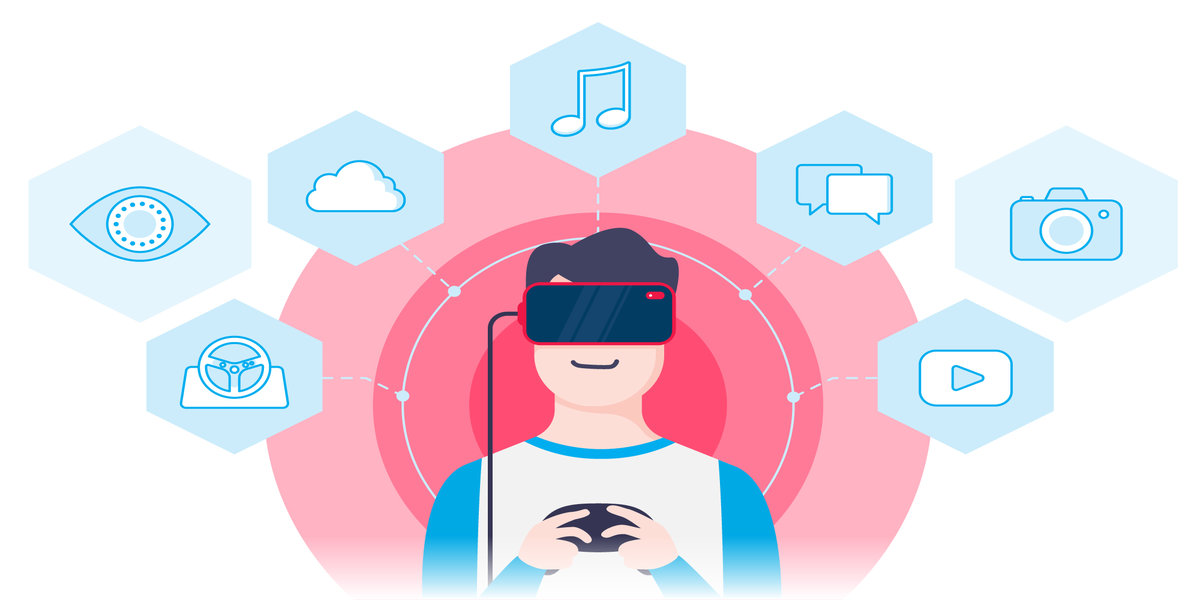
Virtual Reality (VR) and Augmented Reality (AR) have been talked about for decades. They’ve long been a trope in the world of science fiction and fantasy, but are now starting to see real world applications. These new technologies are changing what is possible in the world of business. In fact, many companies are looking at ways they can best utilize these innovations in their operations.
Many leading specialists believe that VR and AR success is tied to several key factors.
- The hardware required to run the application,
- The battery life this hardware provides, and
- The underlying apps being run.
Now, in many cases the answer to at least two of these questions is the same. Namely the smartphone. Smartphones offer all day battery life already and can be paired with simple headsets to provide a cost effective experience. They can also pair up with more expensive gear that provides additional flexibility. The key factor missing though, is the apps themselves. Virtual reality mobile apps are still in the early stages of development and deployment. Their primary focus to date has been in the realm of gaming, but experts point to User Experience (UX) as another area where they can play a major role.
The Future of Mobile App Development
With smartphones being the best tool for businesses looking to realize the benefits of VR and AR, understanding how to best create new apps for this platform is critical. VR and AR apps have a host of different applications based on investment research. In fact by 2025 some estimates put the market at close to $35 billion. While the larger segment of this ($18.9 billion) is expected to be consumer facing, with gaming being the largest single segment, commercial and enterprise investments in a variety of different industries will account for the rest. Companies wishing to engage with the clients need to embrace the enhancements VR and AR will bring to their normal operation.
Smooth Performance
With mobile apps, the experience the user has is instrumental in whether they use the app or not. That first impression has a massive impact. This is where VR can play a role. With VR, high quality performance is an absolute must. VR makes accessing the app seamless and trouble-free. As a business this is a competitive advantage and gives you a leg up on your competition.
The Best Way to Learn
VR is an excellent tool for training. Mobile apps are already being used for learning and training. VR takes this a step further and makes the experience more interactive and engaging. VR in the healthcare sector can literally take students inside a body and teach them knowledge in new and innovative ways. Students now have the opportunity to explore remote destinations with VR letting them bring locations to life in a way never before possible. Added to this of course is the knowledge sharing available through AR where information can be shared in real time. VR mobile apps have opened the door for developers in the mobile space and the options being explored are only the tip of the iceberg.
Helping Improve Productivity
Virtual reality mobile apps are at the forefront of productivity enhancements in businesses. Regardless of the industry or sector, efficiencies are a must. Organizations around the world are constantly striving to do more with less. In this more competitive, global landscape this requirement is even more evident. This is where VR apps can help as they provide a more immersive workplace. VR lets engineers work on equipment without needing to physically be there. This is a significant cost saving for businesses and only one example of the efficiencies VR brings. Other examples include interactive hands-on training sessions from locations all around the world, to medical training. The only limitation is imagination when it comes to VR and its overall application.
This potential growth is something some of the biggest technology companies in the world have realized. They have invested millions in VR and AR development over the past 3 years alone. To date, the primary revenue generated has been through AR and VR headset sales for gaming purposes. Over time, as VR and AR become even more main stream, it is expected that additional players will have an impact here also. Currently Sony leads the field by a substantial margin, but the race for second place is quite tight with Facebook and HTC in very close proximity.
Improving the Customer Experience
User engagement is critical when it comes to apps. If an individual is not engaged with an app immediately on opening, they are much more likely to remove it or simply move to another app with similar functionality. Companies around the world are looking for better ways to work with and improve their customer engagement. VR helps provide that next level of experience modern technophiles are looking for. Having an engaged client helps drive overall loyalty and satisfaction.
This improvement applies throughout and in fact VR has been shown to improve communication significantly. User communication in previous generations was primarily through the use of Plain Old Telephone Service (POTS), but with the advent of smartphones and the internet, these channels are changing daily. Today’s customers expect a variety of different communication channels and VR and AR are just one of the ways to ensure they are kept engaged and involved.
